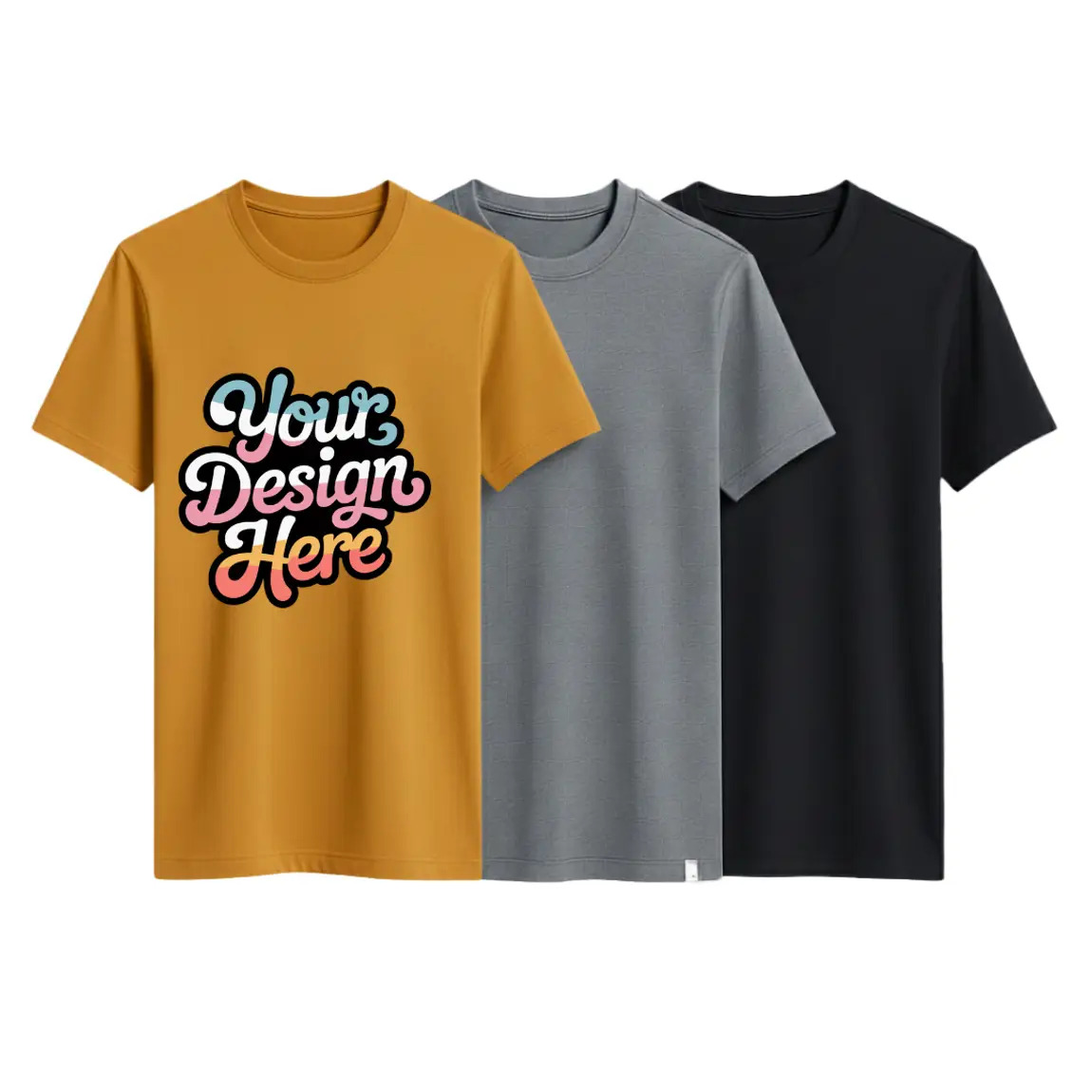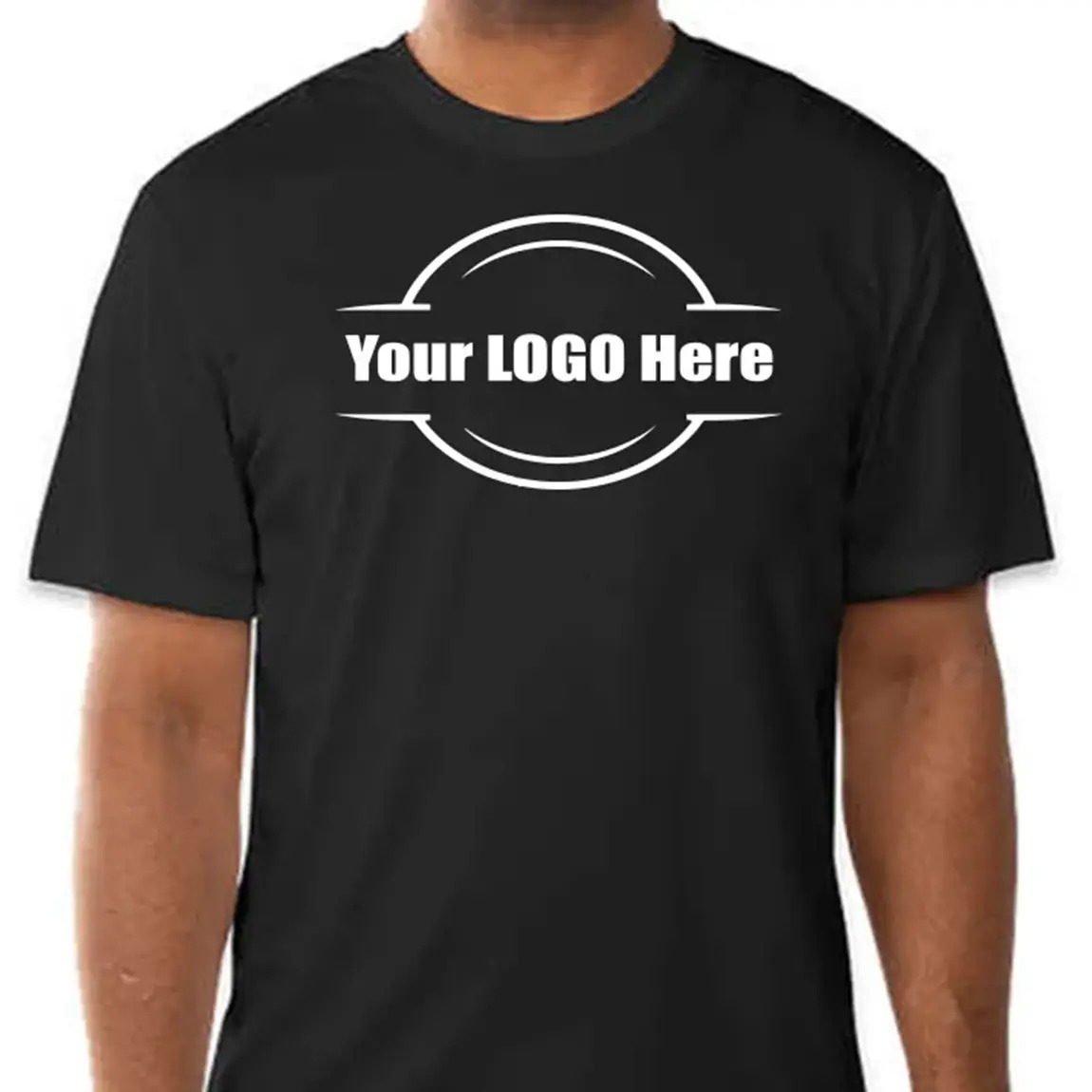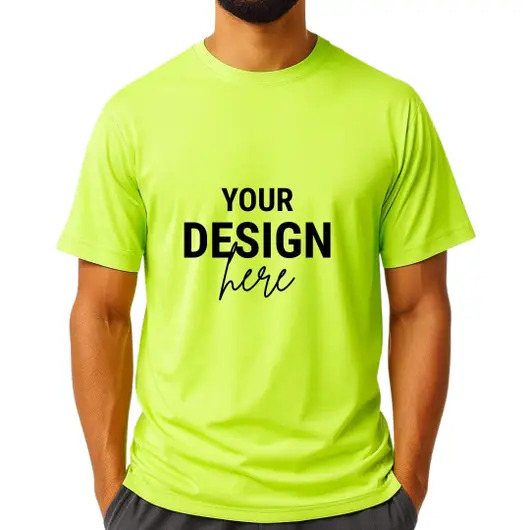Printing custom T-shirts for your business, event, or brand? You'll need to know your options. Staring at a wall of printing acronyms like DTG, DTF, and HTV can feel overwhelming. In fact, choosing how to get your design onto a T-shirt can sometimes be more confusing than creating the design itself.
This guide breaks down the most popular types of T-shirt printing, explaining each method's pros, cons, and costs. We’ll provide clear answers to help you pick the perfect printing technique for your project.
The 8 Most Popular T-Shirt Printing Techniques
Each printing method has a unique process and delivers a different result. Understanding these will give you the confidence to choose the best fit for your charity 5K or corporate hackathon. These T-shirt printing methods include:
Screen Printing Process
Screen printing, also known as silkscreen printing, involves forcing ink through a fine mesh screen onto a surface, with stencils blocking certain areas to create the desired design.
Each color requires a separate screen, which is why setup costs can be high, but per-item costs drop significantly with volume. This traditional screen printing method has been used for decades and remains one of the most reliable printing techniques available.
The term "serigraph" distinguishes artistic screen prints from commercial ones. The medium's artistic applications were highlighted in collections like the "Screen Prints 1970" at the Gorman Museum at the University of California, Davis, showcasing screen printing's versatility beyond commercial use.
Pros
- • It is highly cost-effective for large orders
- • Produces durable designs
- • Works on various fabrics, including cotton T-shirts and synthetic fabrics
Cons
- • Expensive for small quantities
- • Limited color complexity per printed shirt
- • Not ideal for photorealistic images and intricate designs
Best For: Large-quantity orders (50+), simple logos, event merchandise, and work uniforms.
Direct to Garment Printing (DTG)
Think of direct-to-garment printing as an inkjet for clothes. The printer applies water-based ink directly onto the garment, which is then absorbed by the fibers. This allows for highly detailed, full-color prints without the need for separate screens or color-by-color setup.
Pros
- • Excellent for complex, photorealistic designs
- • Soft and breathable feel
- • Quick setup for small runs
- • Best on 100% cotton T-shirts
Cons
- • Less durable than screen printing over time
- • Can be expensive for large orders
Best For: Small batches, highly detailed artwork, and one-off custom tees.
|
Pro Tip: Use DTG for test prints before committing to a large screen print order. Print a single DTG shirt to verify your design's colors and placement. It’s a cheap way to avoid costly mistakes down the line. |
Direct to Film Printing
DTF printing involves printing your design onto a special film, which is then transferred to the T-shirt using heat and a powder adhesive. Unlike DTG printing, it works on various synthetic fabrics, producing exceptionally vibrant colors with sharp detail.
Pros
- • Works on cotton, polyester, blends, and more
- • Incredibly vibrant and sharp high-quality prints
- • Very durable and stretch-resistant
- • Great for small-to-medium runs
Cons
- • The print can feel slightly thicker on the shirt compared to DTG or discharge
- • The process involves more steps than DTG printing
Best For: Full-color logos on polyester sports jerseys, small business merchandise, and designs that need to pop on dark garments.
|
Key Insight: Think of DTF as the ultimate problem-solver for business product promotional strategies. It delivers the vibrant, full-color detail of DTG printing but works on almost any fabric, including tricky polyesters, blends, and synthetic fabrics that other methods can't handle. |
Dye Sublimation Printing
Premium Dri-Fit Short Sleeve T-Shirt
Sublimation printing uses heat to turn solid ink directly into a gas, which then permeates the polyester fabric fibers. The result is a permanent, zero-feel print that will never crack or peel. Dye sublimation is the go-to method for all-over, edge-to-edge designs that demand full-coverage brilliance.
Pros
- • No feel to the print
- • Permanent and extremely durable
- • Allows for full-coverage, durable designs
- • Vibrant and photorealistic
Cons
- • Only works on light-colored, high-polyester-count fabrics
- • Can be more expensive
Best For: Custom athletic wear, photorealistic all-over prints, and performance wear. Our large-format sublimation printers enable stunning, seam-to-seam creativity for brands that want to make a bold statement.
Heat Transfer Printing Method
The heat transfer printing method involves cutting designs out of colored vinyl sheets and then applying them to the garment with a heat press. It's excellent for simple, bold graphics, names, and numbers. It also comes in a variety of finishes like glitter, metallic, and flock.
Pros
- • Great for simple, one-color designs or text
- • Ideal for personalization (e.g., names/numbers)
- • Durable, wide range of special effect finishes
Cons
- • Not suitable for complex designs
- • Can feel thick and stiff on the printed shirt
- • Can be time-consuming for larger orders
Best For: Vinyl printing is great for customizing sports team jerseys, one-off novelty shirts, and adding metallic or glitter effects.
Plastisol Transfers
This T-shirt printing method involves screen-printing a design onto special heat transfer paper instead of directly onto the shirt. These transfers can then be stored and applied to garments later with a heat press as needed, offering unmatched flexibility for on-demand production.
Pros
- • Allows for on-demand printing
- • Achieves the look of screen printing without large upfront runs
- • Great for brands selling designs at company events
Cons
- • Hand feel can be thicker than direct screen printing
- • Requires a two-step process (printing transfers, then pressing them)
Best For: Small businesses wanting to stock designs to press on-demand, event merchandise, and full-color graphics on hats or bags.
Embroidery (Stitching)
Sport-Tek® PosiCharge® Competitor™ T-Shirt
While not technically "printing," embroidery is a popular way to apply logos to apparel. A machine uses thread to stitch a design directly into the fabric, creating textured, high-quality prints.
Pros
- • Professional and high-end appearance
- • Extremely durable
- • Adds texture and dimension
Cons
- • Not suitable for photorealistic or highly detailed designs
- • Cost is based on stitch count
- • Can be expensive
Best For: Corporate polos, hats, jackets, and premium brand apparel.
Discharge Printing
Discharge printing uses a special water-based ink that removes the dye from the T-shirt's fabric, replacing it with the desired pigment. This printing process essentially re-dyes the cotton fibers. The result is a super-soft print with a vintage look.
Pros
- • Extremely soft, breathable feel (zero-texture)
- • Creates a cool, vintage aesthetic
- • Great for dark-colored cotton shirts
Cons
- • Works best on 100% dark cotton
- • Color matching can be less precise
- • Results can vary slightly between shirts
Best For: Fashion-forward brands, vintage-style concert tees, and anyone wanting the softest print possible. For brands seeking a premium, retail-quality feel, we recommend discharge printing to achieve that perfectly worn-in look and feel.
How to Choose the Right T-shirt Printing Method

You've got a design ready and a vision for your custom T-shirts. Now comes the critical question. Which printing method will bring your project to life exactly as you imagine it?
The right choice isn't about finding the "best" printing technique. It's about finding your perfect match. Your decision should balance three elements. The look you want, the budget you have, and the logistics that matter to your timeline.
Consider these six key factors to narrow down your options and ensure your printed shirt looks and feels exactly how you envisioned it.
- • Order Size (Quantity): Some methods, like screen printing, are cost-effective for large batches but expensive for small runs. Others, like DTG printing, are perfect for one-off prints.
- • Design Complexity: How many colors are in your design? Is it a simple logo or a full-color photograph? Different printing methods have different color and detail limitations.
- • Color Accuracy: Do you need to match specific brand colors (Pantone shades)? Some techniques offer more precise color matching than others.
- • Hand Feel: This refers to how the print feels on the shirt. Do you want a soft, breathable print that’s part of the fabric, or is a slightly thicker, more durable feel acceptable?
- • Fabric Type: The material of your T-shirt (e.g., 100% cotton, polyester, or a blend) will determine which printing methods are compatible.
- • Budget & Turnaround Time: Your cost-per-shirt and project deadline are critical. Some methods are faster and more affordable, while others require more setup time and investment.
Choosing a method is just the first step. Choosing the right partner guarantees a great result. At SwagPrint, we combine cutting-edge technology with real human expertise to make the custom apparel process simple, fast, and foolproof.
You don't need to be a printing expert when you work with us. Just upload your logo, add your text, and watch our easy-to-use design tools generate a live preview in seconds.
From there, we handle the rest. We offer embroidery for a polished look, large-volume screen printing, and heat transfer for quick turnarounds. Stylish printed shirts are delivered every time.
Ready to Get Started?
Now that you’re an expert on T-shirt printing, it’s time to bring your vision to life. Our drag-and-drop design tool makes it incredibly simple to upload your artwork, add text, and see a live preview of your creation. There are no surprises. What you see is what you get.
Our capabilities go far beyond T-shirts. We can apply your logo to hundreds of products, from custom hoodies and tote bags to koozies and banners for your next big event or trade show.
Start creating your custom T-shirts today with our easy drag-and-drop design tool, and transform your ideas into professional-quality products in minutes.

/filters:quality(80)/fit-in/630x380/blog/image-1760704381.jpg)

